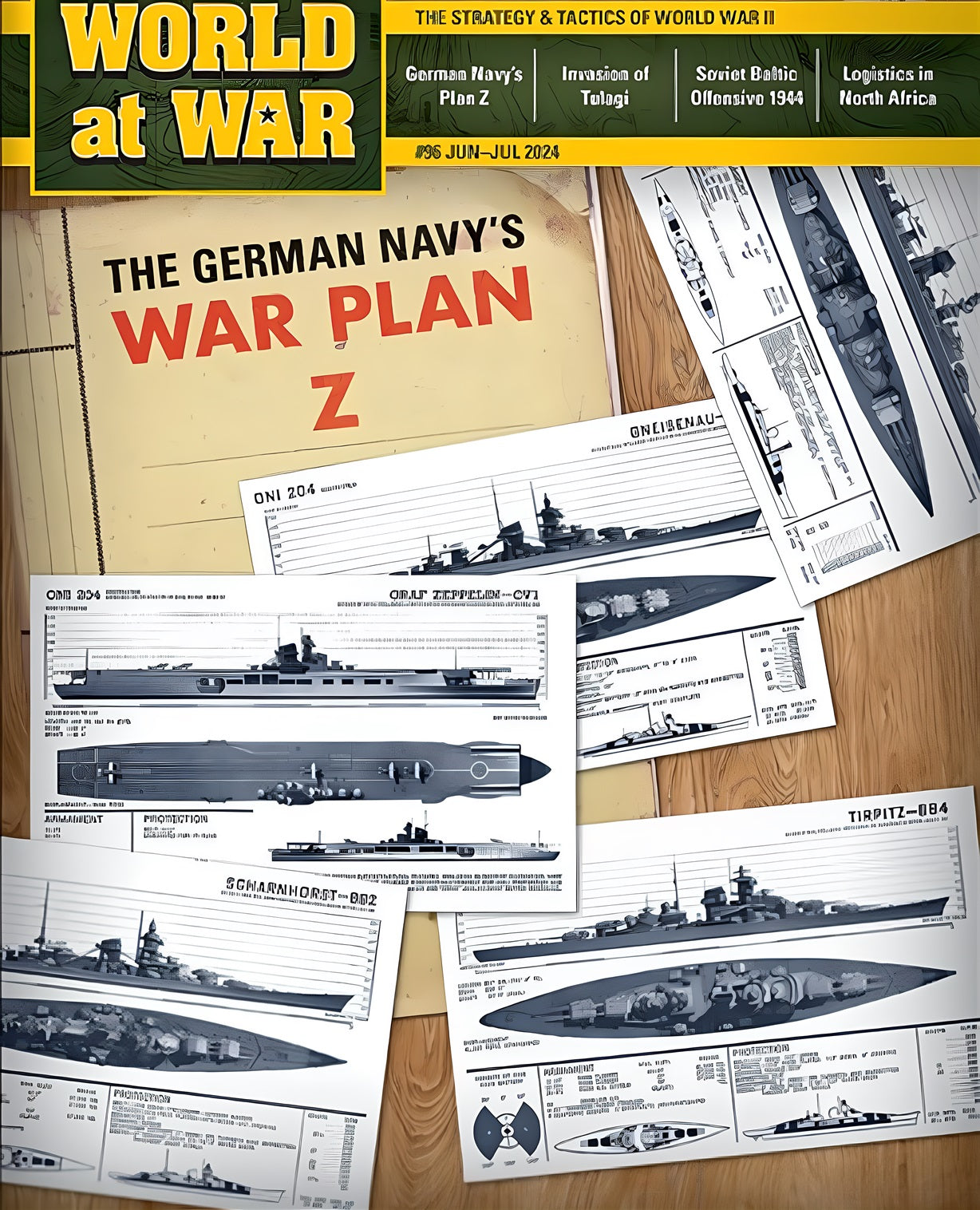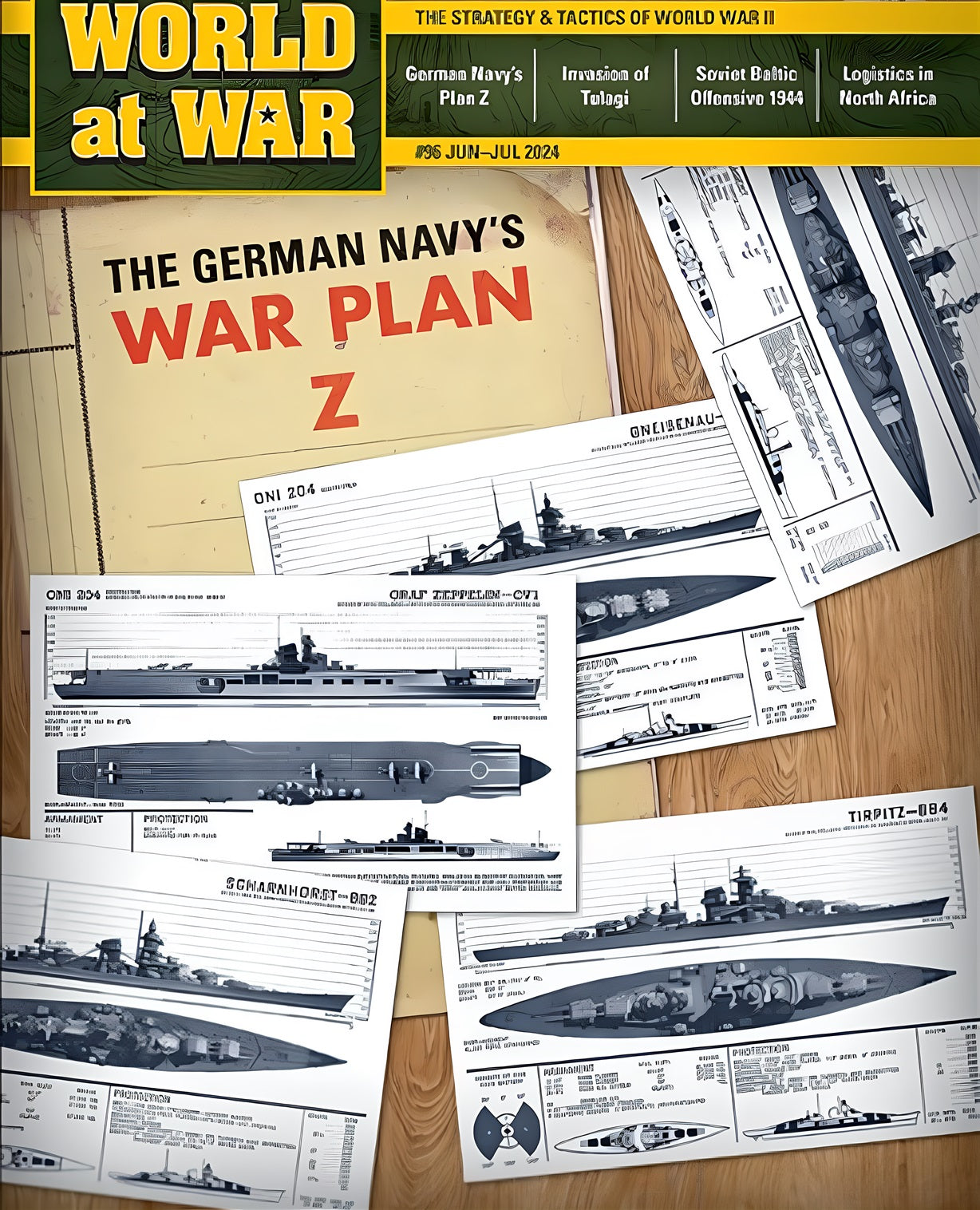1
/
of
1
Little Big Wars
World at War Magazine #96: War Plan Z - The Kriegsmarine Strikes
World at War Magazine #96: War Plan Z - The Kriegsmarine Strikes
Regular price
$44.99
Regular price
$49.99
Sale price
$44.99
Unit price
/
per
Shipping calculated at checkout.
Couldn't load pickup availability
World at War Magazine #96: War Plan Z - The Kriegsmarine Strikes
War Plan Z: The Kriegsmarine Strikes
On 21 June 1919, the Imperial German High Seas Fleet sailed to the main British naval base at Scapa Flow. It was supposed to be turned over to the British as part of the Versailles Treaty settlement of World War I. However, the commanders and crews of those ships had clandestinely decided on a final act of defiance—they scuttled their ships and in that way denied them to the victorious British.
Additional feature articles:
- Tulagi, The First Step: As the summer of 1942 began, the Japanese were establishing a presence in the Solomons. For the Americans, that became the most worrisome aspect of the Pacific War. As a new base of operations, those islands could support Japanese efforts to overturn the results of Coral Sea and Midway. Accordingly, American assaults on Guadalcanal and Tulagi came quickly, designated Operation Watchtower.
- Red Thunder, The Soviet Baltic Offensive: Jan–Jul 1944: In the third winter of the Russo-German War, the Red Army broke the siege of Leningrad and then launched further offensive operations intended to trap and destroy all of Army Group North. Against determined German resistance, winter weather, rugged terrain and command control challenges, the Red Army failed—narrowly—to achieve that final goal.
- Logistics in the North Africa Campaign: Few campaigns in history highlight the importance of logistics more than North Africa in World War II. Local sources of supply were unable to support the armies, particularly in regard to food and water. That forced both sides to import over 95 percent of their supply requirements. Since neither side had land transport links to their homeland production centers, control of sea lanes and ports became critical.
War Plan Z: The Kriegsmarine Strikes
On 21 June 1919, the Imperial German High Seas Fleet sailed to the main British naval base at Scapa Flow. It was supposed to be turned over to the British as part of the Versailles Treaty settlement of World War I. However, the commanders and crews of those ships had clandestinely decided on a final act of defiance—they scuttled their ships and in that way denied them to the victorious British.
Additional feature articles:
- Tulagi, The First Step: As the summer of 1942 began, the Japanese were establishing a presence in the Solomons. For the Americans, that became the most worrisome aspect of the Pacific War. As a new base of operations, those islands could support Japanese efforts to overturn the results of Coral Sea and Midway. Accordingly, American assaults on Guadalcanal and Tulagi came quickly, designated Operation Watchtower.
- Red Thunder, The Soviet Baltic Offensive: Jan–Jul 1944: In the third winter of the Russo-German War, the Red Army broke the siege of Leningrad and then launched further offensive operations intended to trap and destroy all of Army Group North. Against determined German resistance, winter weather, rugged terrain and command control challenges, the Red Army failed—narrowly—to achieve that final goal.
- Logistics in the North Africa Campaign: Few campaigns in history highlight the importance of logistics more than North Africa in World War II. Local sources of supply were unable to support the armies, particularly in regard to food and water. That forced both sides to import over 95 percent of their supply requirements. Since neither side had land transport links to their homeland production centers, control of sea lanes and ports became critical.
Share


